Credits
-
Pou Auaha / Creative Director
James McLean -
Pou Rautaki / Strategic Lead
Trevor Ahearn -
Pou Taketake / Cultural Leads
Sara Judge, Courtney Marsh
-
Ringatoi Matua / Design Director
Lucy Cant -
Kaituhi Matua / Copywriter Lead
Sara Judge
-
Ngā Kaimahi / Team Members
Ashleigh Smith - Content and Experience Developer, Anusha Sugunasabesan - Interactive Design, Alex Purdue - 3D Spatial Design, Robert Heathcote - 3D Spatial Design, Alice Taylor - Producer -
Kaitautoko / Contributors
Creature Post - EAC Projection Floor, Studio Gilay - Gurangatch Theatre Animation, CDM Studio - Burra Eel Model Fabrication, Jasmine Craciun - Illustrations, Milliken - Carpets
-
Client
Australian Museum



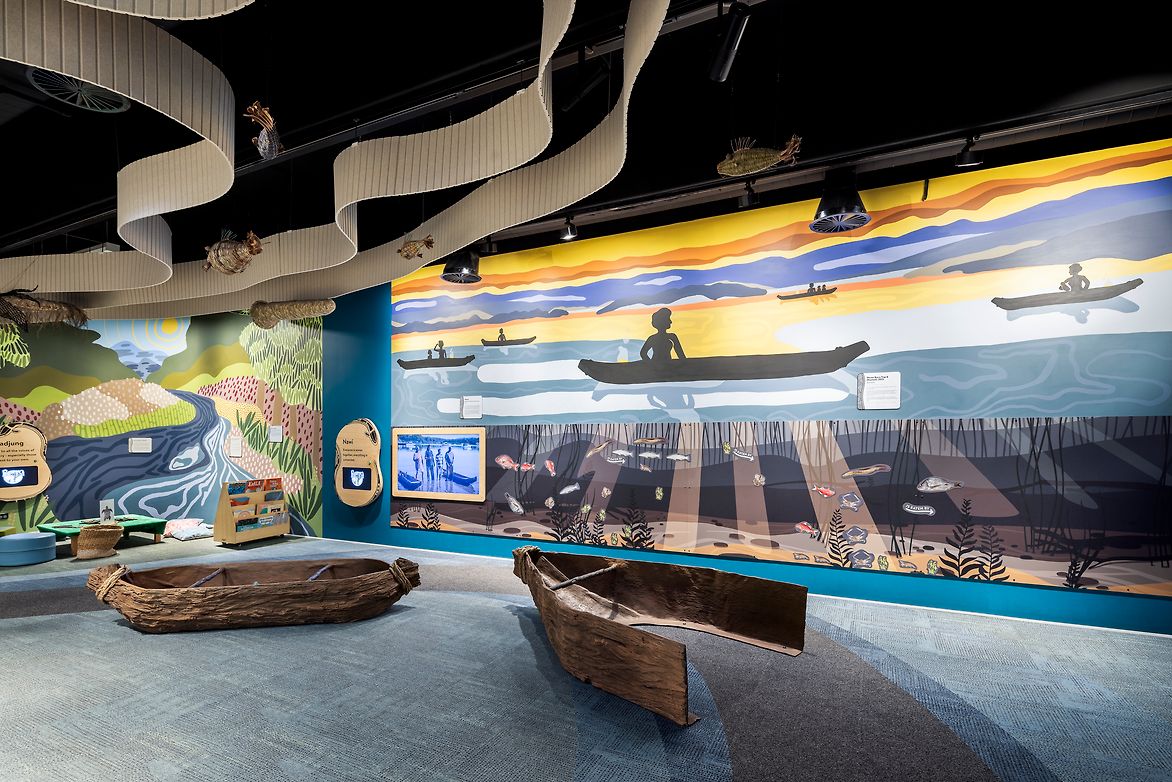
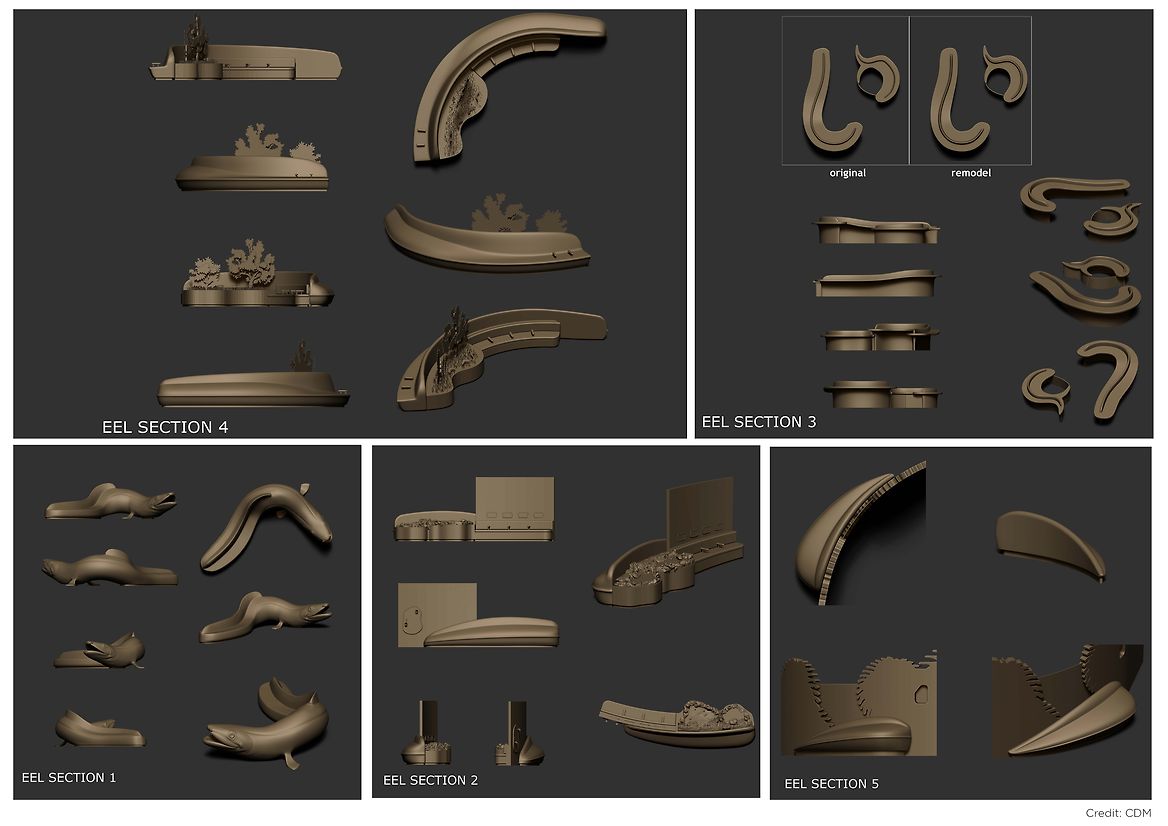
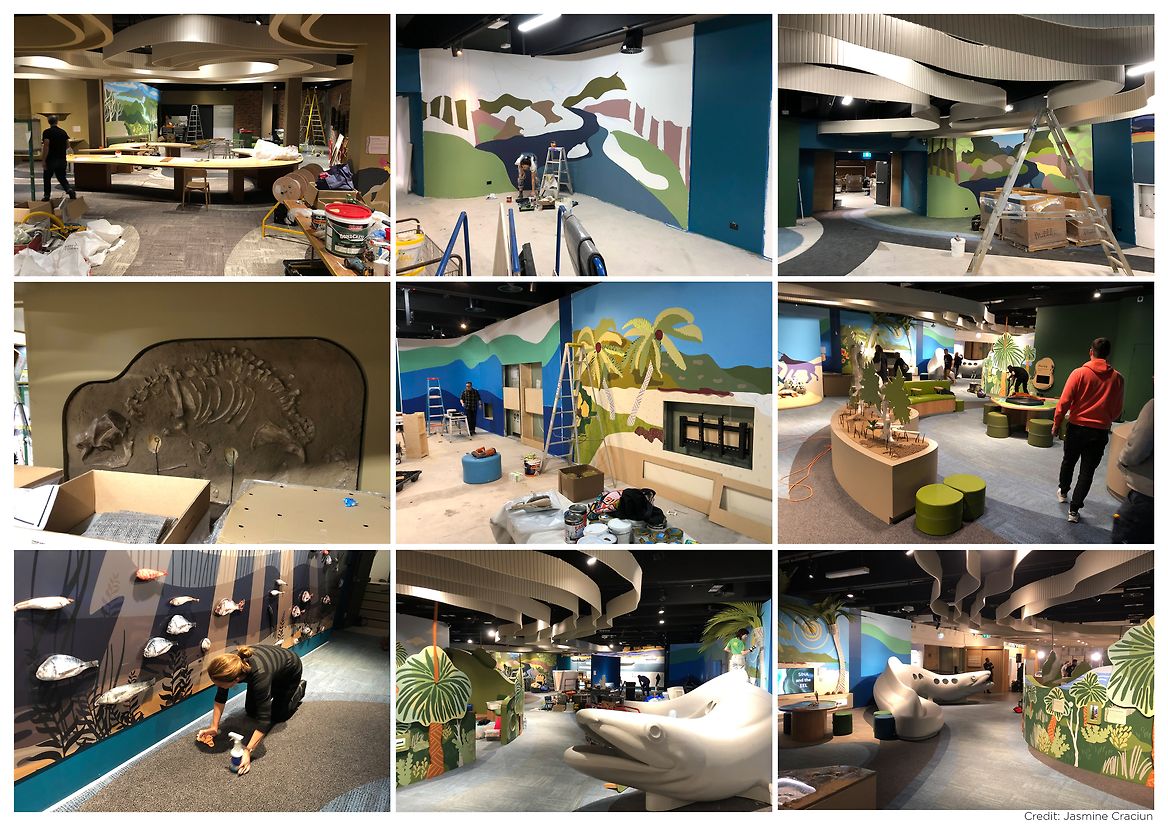
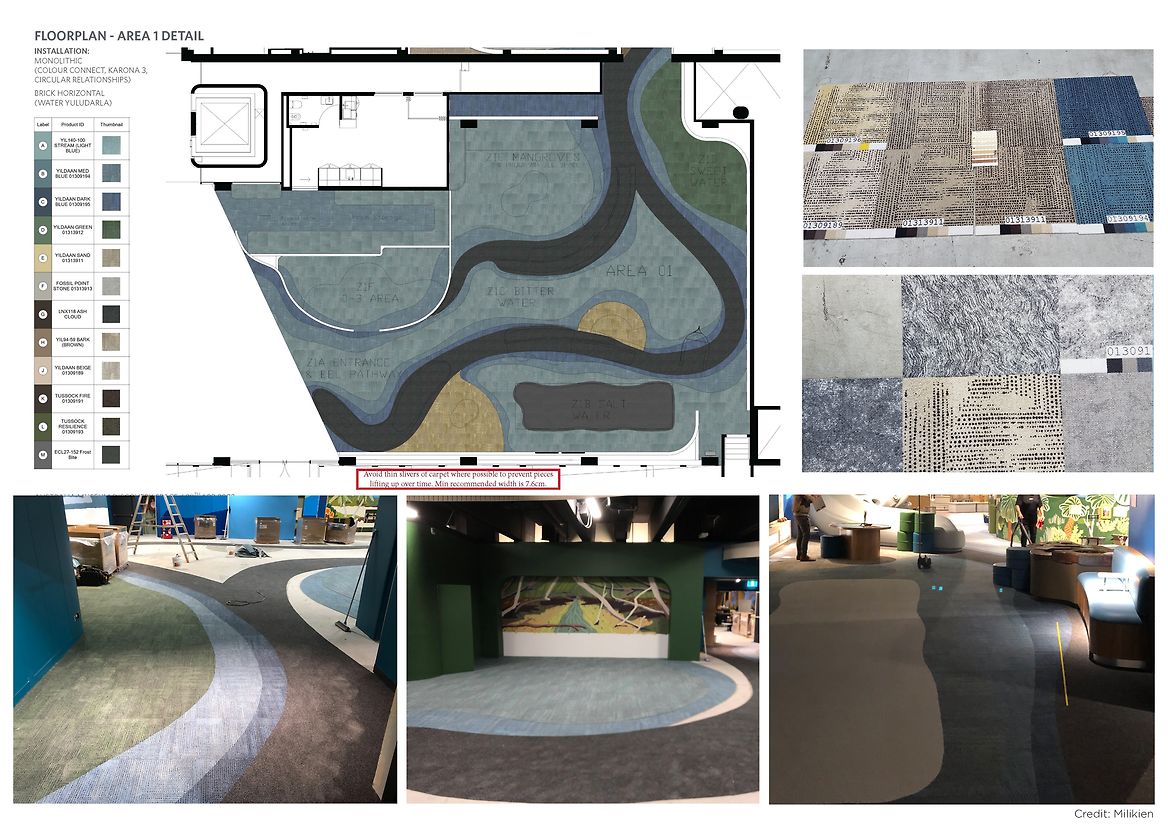

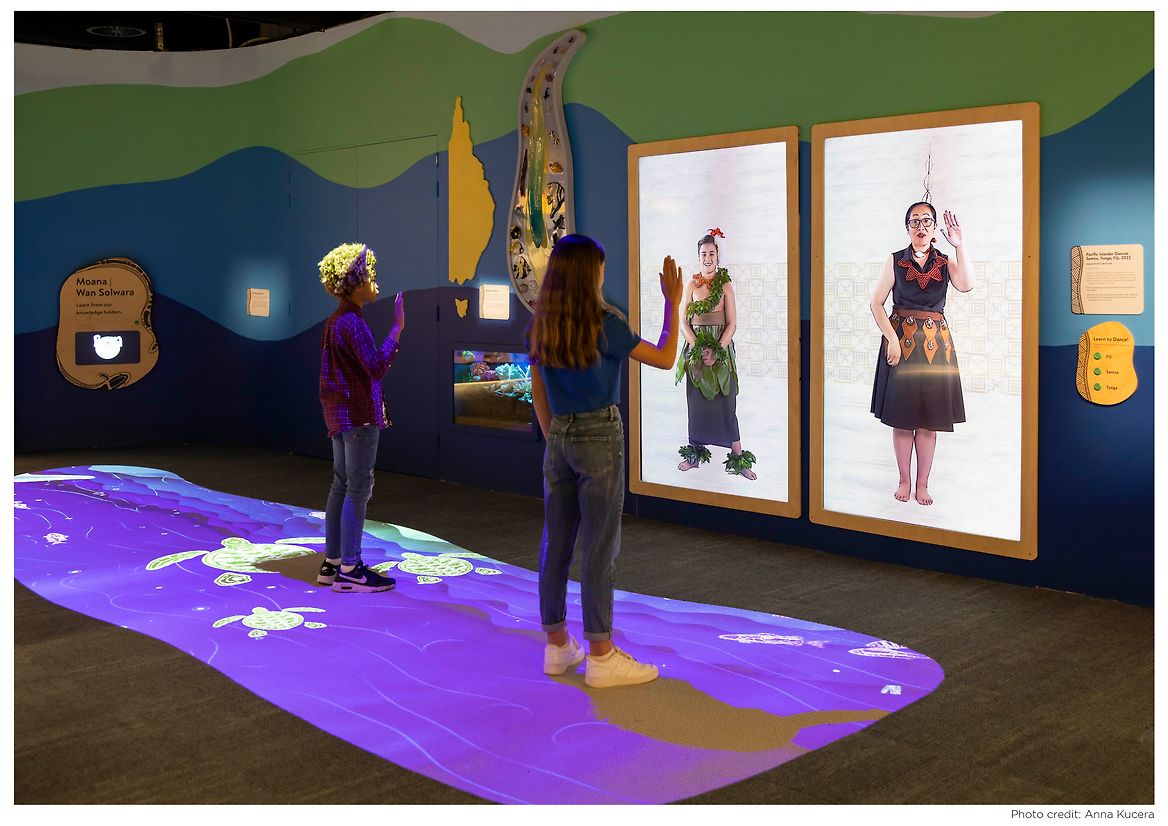

Description:
The Australian Museum wanted to create a play and learning space for children and their families which was about the natural environment of the Sydney area, seen from a First Nations point of view, but also with a strong scientific underpinning. Two unusually shaped spaces linked by a doorway were tagged for this visitor experience.
In a “western” way of thinking, Sydney is first and foremost a city - Australia’s oldest and (by most measures) still its largest. But for the First Nations people who have lived in the region for many thousands of years, it is country. An early statement of the brief was that this space should be based on “country-centred design”. “Country” does not just mean land for First Nations people, but includes waterways and oceans. So another way of thinking about Sydney is that it is, first and foremost, one of the world’s greatest estuary environments.
Guided by members of the museum’s First Nations team we explored the narrative possibilities of a visitor experience based around country. The environment of Sydney was divided into three major zones - saltwater (the ocean), bitter water (the harbours and individual estuaries, where fresh and salt water mingle), and sweet water (rivers and streams).
In collaboration with our First Nations advisors (who in turn were in touch with different communities around the Sydney area), we created the exhibition as a journey through these zones. Our guide through the waters was Burra, the Australian longfin eel, which spawns in the sea (near New Caledonia), enters Sydney’s harbours as a tiny “glass eel”, grows up in the bitter waters of the estuaries, then migrates upstream to mature and grow to great size in the rivers and streams of the Blue Mountains. The Dreaming Story of the eel ancestor Gurangatch and the implacable hunter Mirrigan was told in a special theatre in the sweet water zone, and linked to other stories of the rainbow serpent all across the landscapes of Australia.
The giant head of Burra welcomed visitors to the exhibition, and its body stretched all the way through it, linking the two spaces, and curving back again until its tail was opposite its head, symbolising the eternal journey of the eel.
The project has been a great success, attracting young and family audiences to the museum in unprecedented numbers. It is also very well used by school and education groups. There is a heady mix of cultural and natural history interactives and physical activities: many of these are designed with a “moral” - for example, a tern nest highlights the bravery of terns in defending their nests from “bullies” like off-leash dogs, and a city section celebrates animals which some Sydneysiders look down on, like the ibis and the fruit bat, as street smart survivors that many First Nations people admire for the way they have adapted to the concreted-over incarnation of country which now surrounds them.